Interview: Epic Games concept artist J. P. Targete
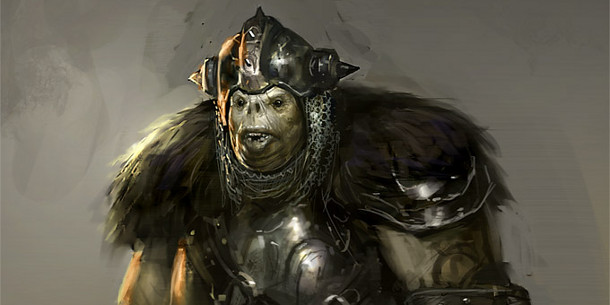
In the run up to the Gnomon School of Visual Effects’ Master Classes 2013, the award-winning concept artist and illustrator reveals his tips for creating truly realistic creatures, and his advice for promoting your own work online.
 Jean Pierre ‘J. P.’ Targete began his career as a book cover artist, creating over 300 covers for publishers like Tor Books, Bantam and Berkeley. His artwork has been nominated for several Chesley Awards, winning the award for best paperback book cover in 2000, and has been published by Spectrum, the Society of Illustrators and ImagineFX magazine.
Jean Pierre ‘J. P.’ Targete began his career as a book cover artist, creating over 300 covers for publishers like Tor Books, Bantam and Berkeley. His artwork has been nominated for several Chesley Awards, winning the award for best paperback book cover in 2000, and has been published by Spectrum, the Society of Illustrators and ImagineFX magazine.
Since 2004, he has worked in the games industry as a concept artist and art director for companies including Ncsoft and Sega. He has also worked in films, on concept art for Disney’s John Carter; in commercials, for Psyop; and as a freelance illustrator for Marvel Entertainment. He is currently senior concept artist at Epic Games.
J. P. is one of 14 leading artists from the worlds of games and visual effects recording an exclusive two-hour session for the Gnomon School of Visual Effects’ Master Classes 2013, held online from 16–31 December. Each class is offered in a private forum, enabling attendees to participate in discussion with the instructor.
We caught up with J. P. in the run up to the Master Classes to find out what his own session will cover, his tips for creating more realistic creatures, and how to market your work effectively on community websites.
CG Channel: What are you going to be covering in your Master Class?
J. P. Targete: The title is ‘Making the fantastical real when designing monsters’. I’m going to take a fantasy-type creature – the sort of thing you’d find in Alice in Wonderland, but more a nightmarish vibe – and make it realistic. Not cartoony, not stylised: something that could fit in the real world.
CGC: So what’s the secret of designing a believable creature?
JPT: It depends what it’s for. If I were creating a design for a videogame, I might not need any reference at all. But if it were for a live-action film, I’d definitely have to ground it. The concept has to stand up next to a human figure. When it comes to weight, and mass, and proportion, it needs to feel like it comes from the same world. It needs to have same level of sophistication and level of detail.
CGC: What do you take from real human anatomy?
JPT: Everything. The way things move: the physicality, the weight involved, the mass. When you see 3D characters in films, the ones that work have a sense of weight. The ones that don’t can look great, but you can tell they aren’t real. It’s not really the rendering at that point: it’s the physics.
CGC: But designs do still need to be rendered, right? Do you have any tips there?
JPT: Use plenty of photo reference. Not just for texturing; for the whole subsurface scattering thing, how light hits skin and goes through the surface layers.
In the Master Class, I’ll be using Photoshop, so some of the rendering techniques I’ll be using will include creating a bunch of textured layers – not using photographic reference material, just certain types of brushes in Photoshop. Creating your own textures gives a sense of ownership that cutting and pasting can’t.
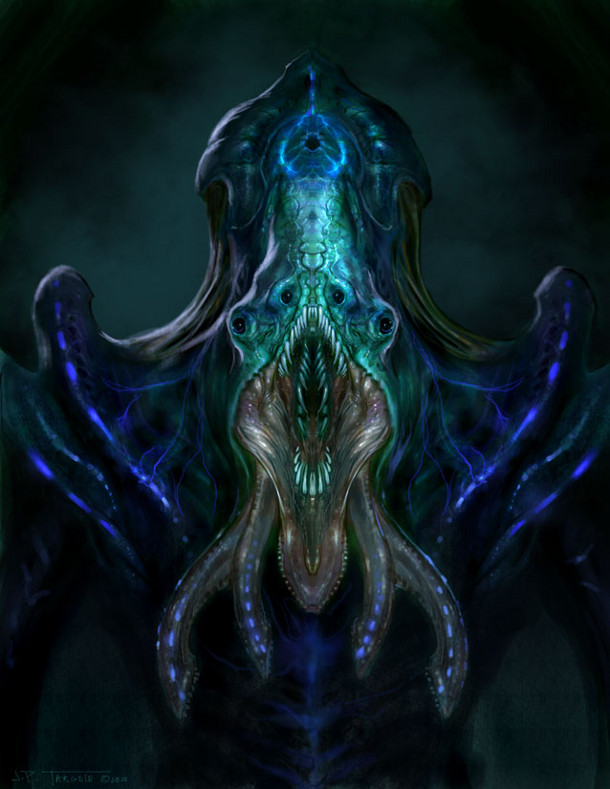
Colour defines form, points out J. P. Studying how light bounces from surface to surface in the real world will help fantastical images – such as this bioluminescent creature – feel grounded in reality.
CGC: In the tutorial you wrote for ImagineFX a few years back, you start from traditional pencil sketches. Is your workflow for the Master Class the same?
JPT: No, it’s going to be all-digital. But a lot of kids these days are coming out of colleges without a background in traditional media, which is very important sometimes. You can still learn it, but if you don’t have someone instructing you, it’s harder to pick up on the little subtleties that come up as you paint or draw.
CGC: What did you learn from your own training that you wouldn’t have if you’d only worked digitally?
JPT: Oh, tons of things. The way that colour is important to form, for one. When I see student concepts, they’re very often too monochromatic: there’s no consideration of light sources, bounce light, ambience. Painting from life with traditional media helps you to develop an eye for that.
You also have to understand how to create a neutral default expression: when you’re creating a monster, you don’t want to make him so mean that when the animators get to work, there’s no variation. When you work from life, you can see that with a model: when they’re straining, when they have too much weight on one leg, and so on.
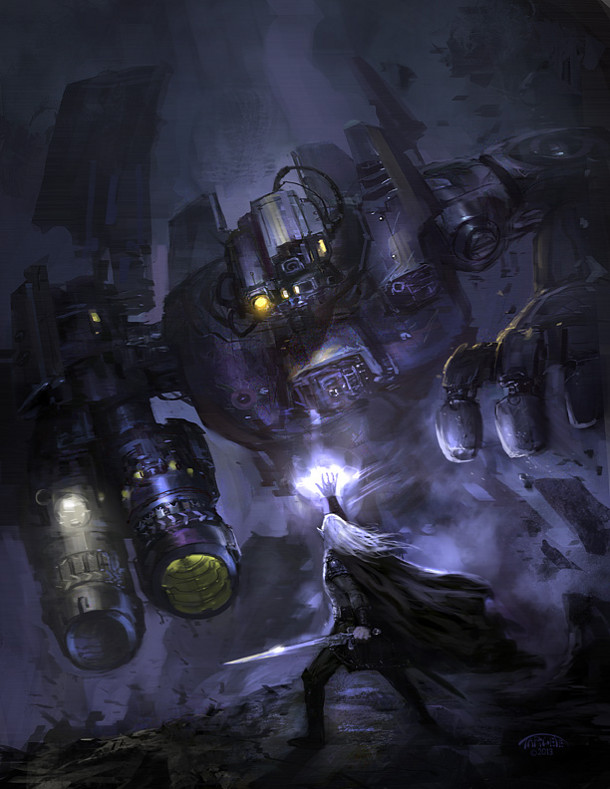
Fantasy versus science fiction. Whereas illustration has more scope for the fantastical, concept artists must be prepared to adapt their work to the practical needs of the genre they are working in, advises J. P.
CGC: Can you talk about your current work for Epic Games?
JPT: No, it’s all unreleased projects at the minute. But I’m working with a bunch of amazing artists, and I’m real humble, because every day they’re teaching me something. As an illustrator, I’m sometimes on my own for a while, so it’s nice to get that feedback going.
CGC: How hard did you find it to move from pure illustration to concept art?
JPT: It was a little difficult, mainly in terms of understanding what the studio wanted. It wasn’t, ‘Draw me a dragon!’ It was, ‘Draw me a dragon that does this!’ – that shoots ice, or whatever. When you’re doing book covers and illustrations, there’s more freedom for the fantastical side of things. But when you’re doing concepts, it’s very specific, and it’s different between studios, because every studio needs a different style.
CGC: So when you start at a new studio, part of the process is learning what that studio needs?
JPT: Exactly. And that can be real hard, especially if you’re coming from a fantasy background and the project you’re working on is science fiction. You have to get up with what’s current, what’s the new best thing. And it’s the same with different types of films: you have to jump from genre to genre – comic book, sci-fi, fantasy – and understand the top of the line. You can’t have a closed vision: you have to be open to new things.
CGC: Between Epic, John Carter, Marvel and Psyop, you’ve worked in every sector of the CG industry. Would you recommend moving around that much?
JPT: It works for me, but I’m not sure it’s such a great idea, because it becomes unstable sometimes. But it’s good to have all those skills in case one side of the industry goes down, right? For a while there, book covers were all traditional painting, and now they’re all Photoshop. Then the games industry blew up and became the big thing. It’s good to understand all these things, but it’s maybe not a good idea to try to do everything.
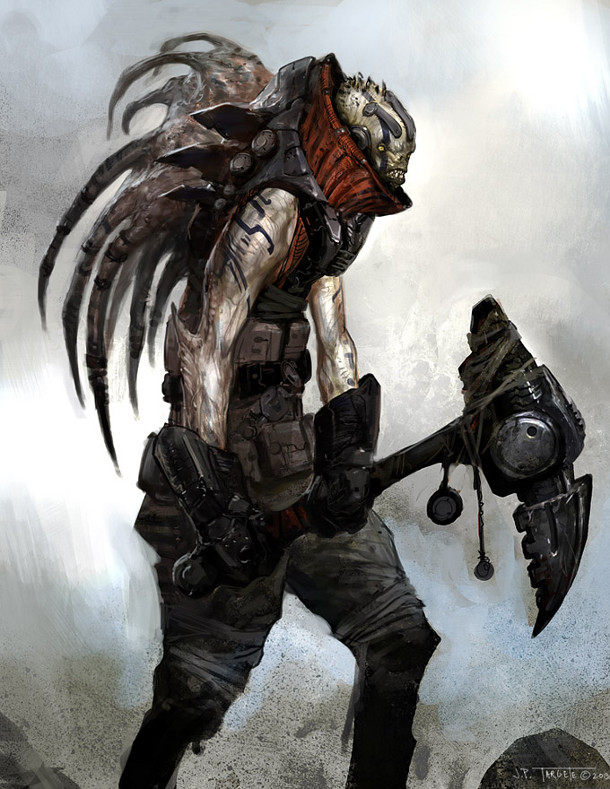
Post your work on as wide a range of community galleries as you can, particularly when starting out, advises J. P. The feedback is always valuable, and the exposure may lead to unexpected offers of work.
CGC: In previous interviews, you’ve talked about the benefit of posting your work on community sites. Why are they so valuable?
JPT: You can get a lot of feedback from other people. These days with the internet, knowledge is free. It’s easy to find a lot of knowledgeable people out there, some of whom are willing to help. You really just need to browse these sites to find out what everyone else is doing in the industry.
CGC: Is it better to post only a few really good pieces, or to concentrate on posting regularly?
JPT: Whatever you want to do. Because one piece can mean different things to different people. If you do something you think is great, someone else may not think so. It’s important to post what you want to post, based on the type of feedback you’re looking for.
I post a lot of stuff, and not all of it in my opinion is good. But it shows something new, or something different. Because if you have a director or book publisher stop by your site and decide to call you up, it may be to do something you’re not used to; something that’s not in your comfort zone. I like the grittier dark stuff, but maybe someone wants me to do something more light-hearted. Post what you think is interesting.
CGC: Should you focus on a single site, or try to post work in as many places as possible?
JPT: You should definitely have a comprehensive gallery on your own personal site, but when you’re starting out, hit as many sites as possible. There are some sites where people don’t give you feedback, and there are others where everybody comments. You have to find one [with a culture] that you enjoy, because that’s where you’re going to grow the most. Maybe there will be a couple of trolls, but most people are sincere and will give you good advice.
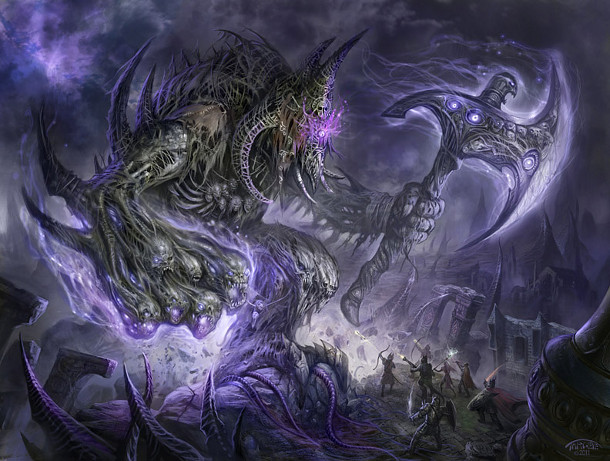
How dare you criticise me! Don’t take feedback on concept work personally: “If someone doesn’t like your art, it isn’t that they don’t like you: they just need what they need for that project,” J. P. points out.
CGC: What tip would you give to a young artist who wants to do what you’re doing?
JPT: Pinpoint what you want to do. If you like really gritty creatures, find an artist – or a bunch of artists – who do that sort of thing, and study them. Keep pushing and keep learning.
And study on your own, too. Always draw. The only way is to continue making mistakes, and correcting them, and getting faster.
CGC: Is it just a matter of putting in the hours, or should you do more structured practice?
JPT: Both. Structured exercises like drawing from life help, but then spend a couple of hours drawing out of your imagination. That’s what’s going to make you unique.
CGC: Is there anything you wish you’d been told yourself before you got into the industry?
Just to have patience with the people you work with, and work for. Don’t take things personally. If someone doesn’t like your art, it isn’t that they don’t like you: they just need what they need for that project. As an illustrator, you’re so connected with your art, it’s part of you, but when you get into concept work, everything is done for the product. You need a thicker skin.
Register for the Gnomon School of Visual Effects’ Master Classes 2013 ($295 for all 14 classes)
Full disclosure: CG Channel is owned by the Gnomon School of Visual Effects.
